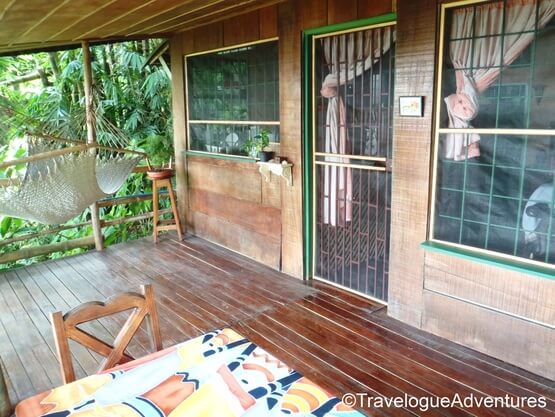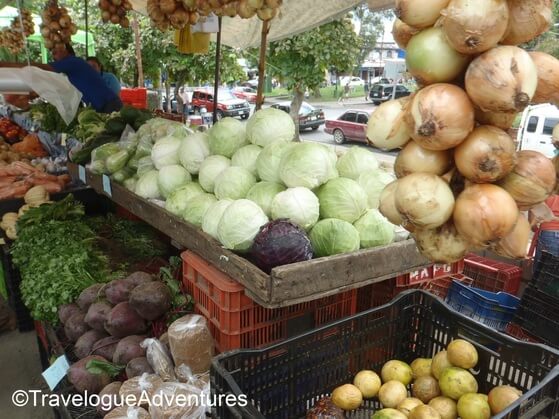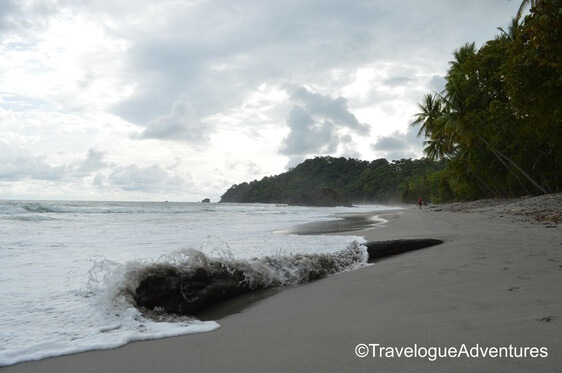Today marks our two-week anniversary of living in Costa Rica. We truly love it here so far—the people, the relaxed approach to life, not to mention the spectacular natural beauty. Everything that brought us here to begin with is still just as magical as when we first discovered it. Sometimes when we see a sloth hanging from a tree in our backyard or a brilliant sunset from our porch, we joke that we should pinch ourselves because living here still doesn’t seem real.

But everything hasn’t been all sunshine and butterflies. It’s going to take some time to adjust to our new lives. Although we had been to Costa Rica many times before and had a general idea of what to expect, vacation did not entirely prep us for living here. Unlike on vacation, we of course need to work and can’t live the vacation lifestyle of going out to eat and on excursions all of the time. That means that we need to figure out the basics like food, housing, transportation, and language (learning Spanish!), all on top of getting into a work routine. Here are some of the biggest changes we’ve faced since becoming ex-pats:
New Jobs
I’m not going to say that leaving the nine-to-five isn’t great, of course it is. Getting used to our new jobs as writers though is going to take some time. In the United States, I was an attorney and Matt was the operations manager of a landscape company. Our jobs were often busy and hectic, but they were stable. We were comfortable in those jobs, comfortable in our roles and in the steady paycheck. Now with the move, we have transitioned from writing on the side to writing full-time. Our office is also our home, which is a challenge. Drawing the line between routine house chores, things we want to do, and productive work is still blurry to us. We are also contending with an inspiring yet distracting view. It’s hard not to get sidetracked with flocks of parakeets, troops of monkeys, and ocean waves calling for attention. We do have one book under our belt but it is still scary solely to rely on ourselves for income.
Rain & Moisture
We knew we were arriving during the rainy season but weren’t quite sure what to expect. Our research told us to expect sunny mornings and rainy afternoons. For the most part, this has been true. There have been a few days, though, where has rained all day. And a lot of the time when it’s raining, it’s pouring so hard that you don’t think it could possibly rain any harder. Manuel Antonio, the town where we’re currently staying, gets an average of nineteen inches of rain in August, and even more in September and October.
All of this moisture and humidity means that it takes a long time for things to dry, causing fabrics, like bed sheets, to feel wet. On the upside, the rain keeps the plant life green and lush. And because the temperature stays a consistent 75°F to 85°F year round, it’s always a warm rain. After living in New England for the last thirty-plus years, we’ll take a rainstorm over a snowstorm any day!
Critters
Open-air living in the tropics means that lizards, cockroaches, beetles, and all sorts of flying insects find their way into your home. Even if you’re sure you’ve checked the screens for holes, they still manage to come in through the cracks. Ants will ransack your kitchen too if you don’t clean up immediately after meals, so there’s no more waiting to do the dishes until tomorrow. Every time we come to Costa Rica I am initially put off by the idea of living among creepy crawlies. But for the most part, if you leave them alone, they’ll you leave alone. They’re a natural part of the ecosystem in the jungle, something that you just have to accept living here. But at least some of them have benefits. We’d like to think that the many lizards sharing our casa are helping to control the mosquito population, leaving us with fewer bites.
No Car
Life without a car has been interesting. We only had one car in Boston but it was really nice for trips to the grocery store and traveling longer distances. We don’t mind walking and using the local buses to get around but need to figure out the routes so that we can go on more day trips and explore beyond our immediate area. Ever since we arrived, we’ve been hunting for a small, fuel-efficient SUV. We’re hoping to buy one sometime this month so that we have it for when we move farther south in September, when a car is more of a necessity. So far we haven’t had much luck. Cars are extremely expensive because of import taxes. Right now Matt is sifting through a fine selection of beat up fifteen-year-old SUVs, all priced anywhere between $7,000 and $10,000.
Grocery Store/Food
If you walk into the local supermercado (supermarket), you would assume that the Ticos eat basically three things: canned tuna, rice and beans, and meat. There’s also a large assortment of locally made chips and other salty snacks like chicharones and lots of cookies. Although most grocery stores do have just about everything that’s available in the United States, many items are two or three times the price. Foods imported from the United States are especially expensive. For example, a jar of Skippy peanut butter is about $6, a box of Cheerios $7, and a bag of shredded cheddar $8. The good news is that produce is very inexpensive, especially at the weekly feria (farmer’s market). We recently made a trip to the feria in the nearby town of Quepos and paid $10 for fruits, veggies, and fresh herbs that lasted almost one week. We’re having to adapt our eating habits somewhat. There certainly won’t be as much lasagna for dinner or cereal for breakfast, but we’re figuring it out slowly but surely.

Language
We knew that with our limited Spanish knowledge, the language barrier would be a problem. We’re fortunate that the area where we’re staying has a lot English speakers. Our landlady, for instance, is a local Tica who has picked up English over the years and is now nearly fluent. This likely all will change when we move next month to any area that is less touristy. For this reason, we’ve been trying to fit in Spanish lessons whenever we have free time, testing our skills on bus drivers or supermarket clerks. I am using books while Matt has been studying online. That’s all well and good until it’s time to turn off the Spanish for the day and all of the T.V. stations are broadcasting in, you guessed it, Spanish. It makes for an exhausting evening trying to read subtitles or decipher what’s happening to Charlie on the latest episode of Two and a Half Men.
* * *
Even with having to adjust to all of these changes, we are still having fun and trying to take every new challenge in stride, like the locals do. We’ve had a blast exploring Quepos and Manuel Antonio, finding hidden beaches and the best spots for happy hour. And we’ve loved the time we have spent on our porch, just watching birds and wildlife go on with their day in our backyard. We wouldn’t trade in this opportunity for anything.
So What Happened Next . . . ?
In July 2013, we boarded a plane for a new life in Costa Rica. Want to follow our story as it happened? Check out the posts below to see how our dream became a reality and what it has been like so far.
- We’re Moving to Costa Rica!
- Living in Costa Rica: One Month Update
- Buying a Car in Costa Rica
- Fun Facts from Our First Six Months in Costa Rica
- Our First Year in Costa Rica
- House Sitting: How to Live in Costa Rica for $2,000 a Year
- Two Years in Costa Rica: How Life Has Changed
- Having a Baby in Costa Rica
- Applying for Residency in Costa Rica Without a Lawyer
- Three-Year Update
Post by: Jennifer Turnbull-Houde & Matthew Houde


